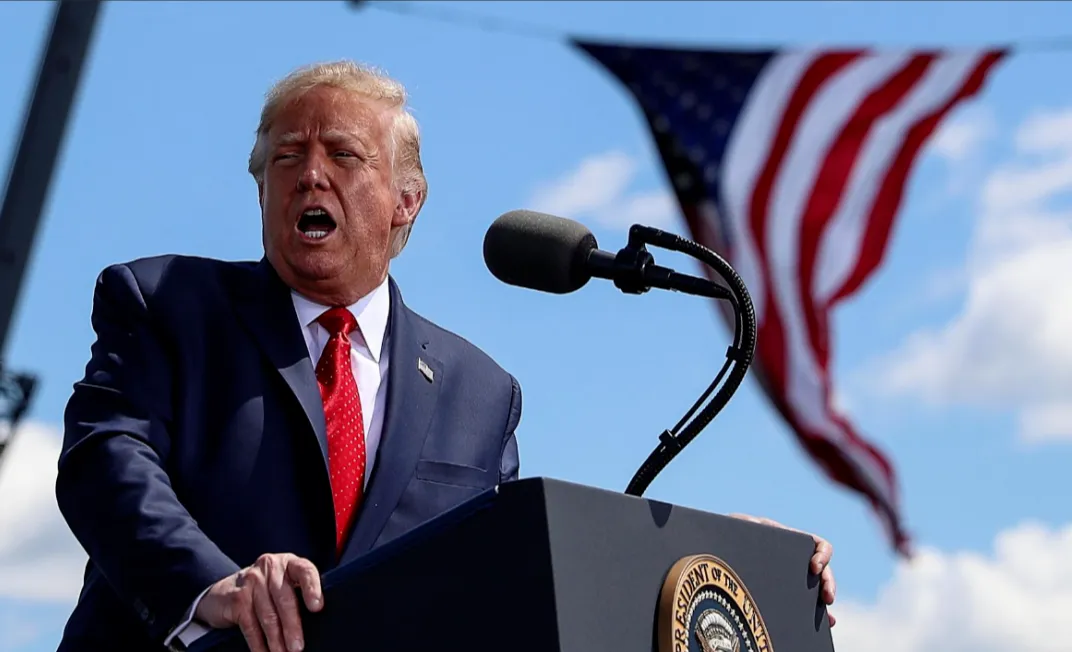Original | Odaily Planet Daily
Author | Azuma

In the early morning of April 10th, EigenLayer, the project with the highest market expectations at the moment (perhaps without "one of"), and the Ethereum re-staking protocol, officially announced the launch of the mainnet and introduced the first "Active Verification Service" (AVS) EigenDA for data availability verification.
At this point, some friends may be confused. Didn't EigenLayer launch the mainnet in June 2023? Now the TVL has already exceeded 13 billion US dollars, why is it said to have launched the mainnet again this time?
First of all, it needs to be clarified that EigenLayer mentioned during the testnet phase that the launch of this protocol will be divided into three stages, gradually introducing different ecosystem participants and activating new features step by step.
In June 2023, EigenLayer actually only launched the first stage "Stakers", allowing stakers to re-stake through EigenLayer; and today's launch is the second stage "Operators", allowing verification nodes to register and accept re-staking user delegations, and the first AVS service EigenDA will also be launched in this stage; in the future, EigenLayer will launch more AVS services outside of EigenDA (currently, more than 10 AVS are being tested on Holesky).
- Odaily Note: The "three-step" plan is the development roadmap proposed by EigenLayer when it first launched the testnet last year. However, in some subsequent announcements, EigenLayer seems to have rarely mentioned this plan specifically. But from the actual progress of EigenLayer, it is still executing along this path.
What is AVS? What is EigenDA?
A lot was said in the preface, but for friends who are not very familiar with the basic concepts of EigenLayer, they may still be confused when they hear about AVS and EigenDA.
To understand these two concepts, we need to start with EigenLayer's business model. In short, EigenLayer's business can be divided into three parts:
First, re-staking users can re-stake their ETH and its derivative LST through EigenLayer and delegate tokens to EigenLayer verification nodes;
Second, EigenLayer verification nodes can choose to join various AVS and use the delegations from re-staking users to perform various verification services;
Third, clients (such as oracles, cross-chain bridges, Rollups, etc.) can rent various verification services of AVS through payment (not yet launched).
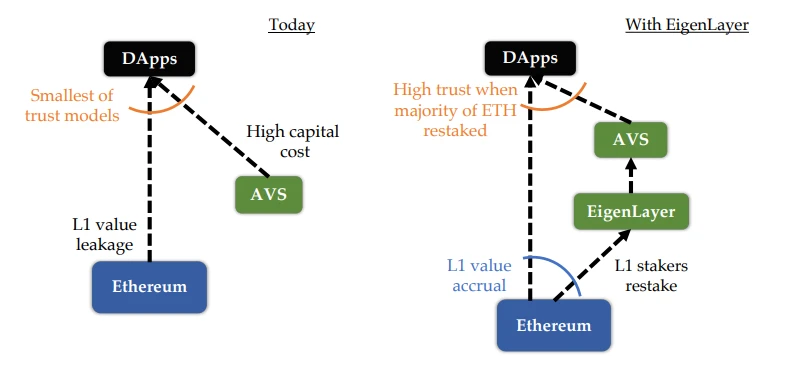
You can further break down this cycle through the following steps:
EigenLayer can gradually accumulate huge value through the deposits of countless re-staking users;
Then, verification nodes can use this huge value to build a more secure verification system (Odaily Note: from the perspective of PoS mode, the larger the value scale, the more solid the consensus), these so-called verification systems are AVS, which can be used to help various downstream projects such as oracles, cross-chain bridges, Rollups, etc., to perform more secure verification services;
From the client's perspective, various applications will no longer need to spend time and effort to build a not-so-solid verification network themselves (Odaily Note: for example, some cross-chain bridges currently have a huge TVL locked, but the verification system depends on the small market value tokens of the project), but can easily and efficiently use EigenLayer's AVS to directly enjoy a more secure verification system;
In turn, re-staking users and verification nodes will continue to profit from client's rental payments.
The above is a brief overview of EigenLayer's business logic. In short, AVS is the various verification services that EigenLayer can provide, and the EigenDA officially launched on the mainnet this time is the first AVS of EigenLayer.
EigenDA focuses on providing data availability solutions for Rollups. You can simply understand it as Celestia nested within the EigenLayer protocol, and this solution naturally relies on EigenLayer's consensus security guarantee of tens of billions of dollars.
What can be done now?
For ordinary users, compared to understanding EigenLayer's business logic step by step, "how to interact effectively and gain potential airdrops" may be a more important concern.
With EigenLayer launching a new stage on the mainnet and officially activating EigenDA, the protocol does have new interaction space at the moment. As mentioned earlier, the content of the "Operators" stage allows verification nodes to register and accept re-staking user delegations, so what we need to do is to delegate the re-staking tokens to the verification nodes.
For users who have re-staked on EigenLayer before, you can follow the steps below to do some tasks. Users who have not yet made a deposit can first refer to "How to Interact with EigenLayer after the Official Launch of the Mainnet?".
Odaily Note: It needs to be clarified that if you did not directly deposit on EigenLayer's front end, but interacted indirectly through re-staking protocols such as Renzo, Puffer, Ether.fi, etc., you don't need to do anything now, the above-mentioned protocols will delegate on your behalf.
First, we open EigenLayer's official website, and users familiar with the interface may find a "Delegate Your Stake" icon on the right side of the interface, click on it to start the delegation.

Then we will enter the delegation interface of the verification node. At present, there are already hundreds of nodes in this interface. For the sake of operational stability, we can prioritize selecting well-known nodes with high delegated amounts for delegation. At this time, we can click on "TVL Desc." in the sorting method on the right side.
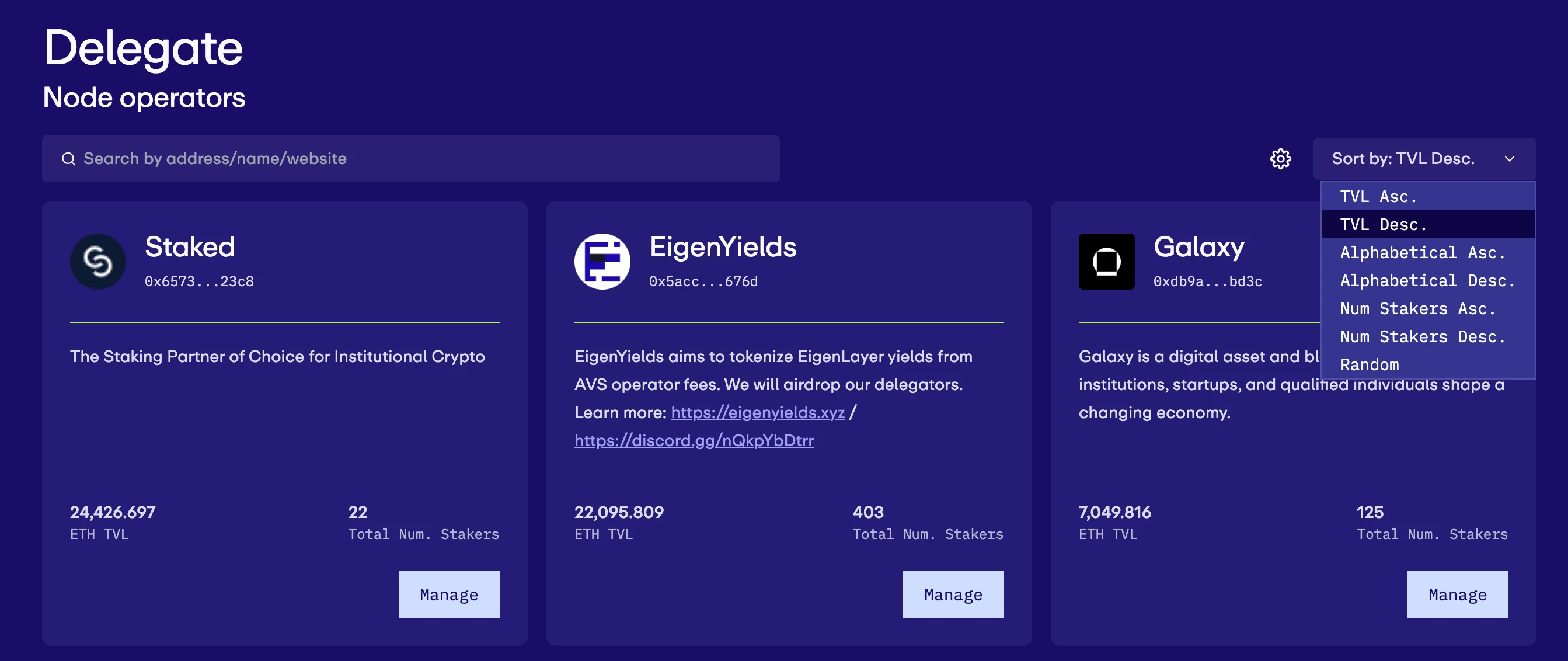
I personally chose EigenYields, which is currently ranked second in delegated finance. Click "delegate" to complete the delegation operation. From the figure below, it can be seen that the EigenYields node has clearly selected and joined EigenDA in the "AVS Registration" column.
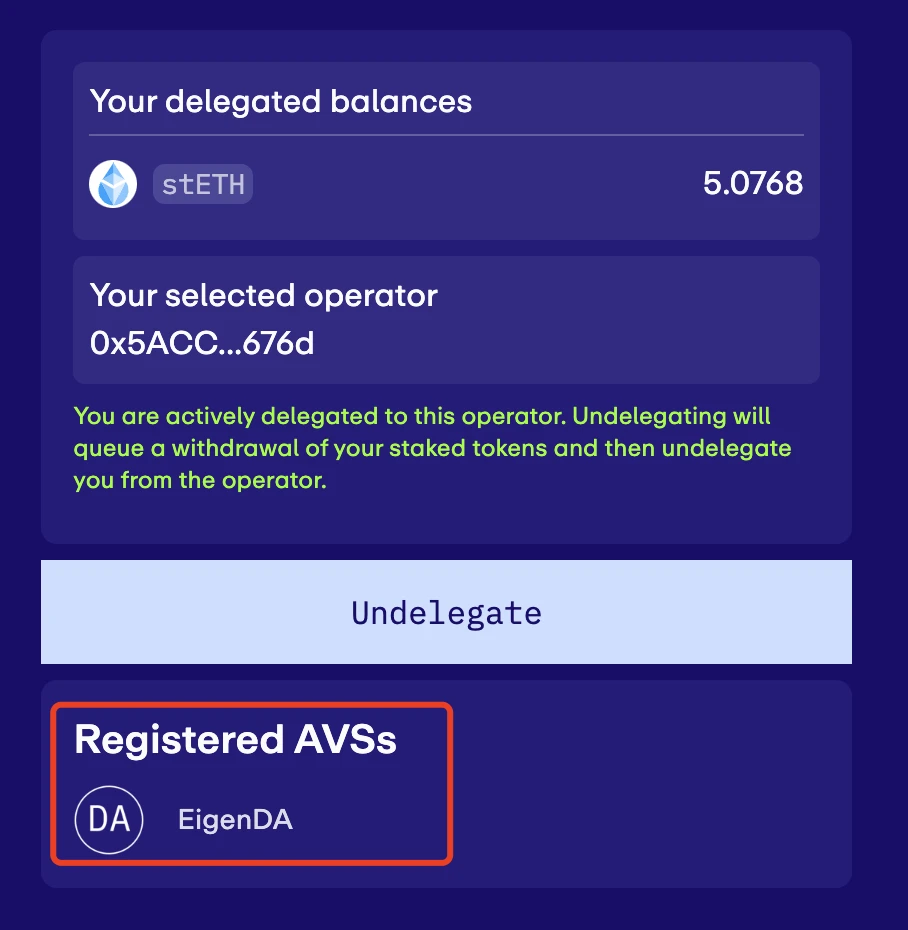
Another reason for choosing EigenYields is that the project has mentioned that it will announce the token economic model and governance information in this quarter, so you can try to "kill two birds with one stone".
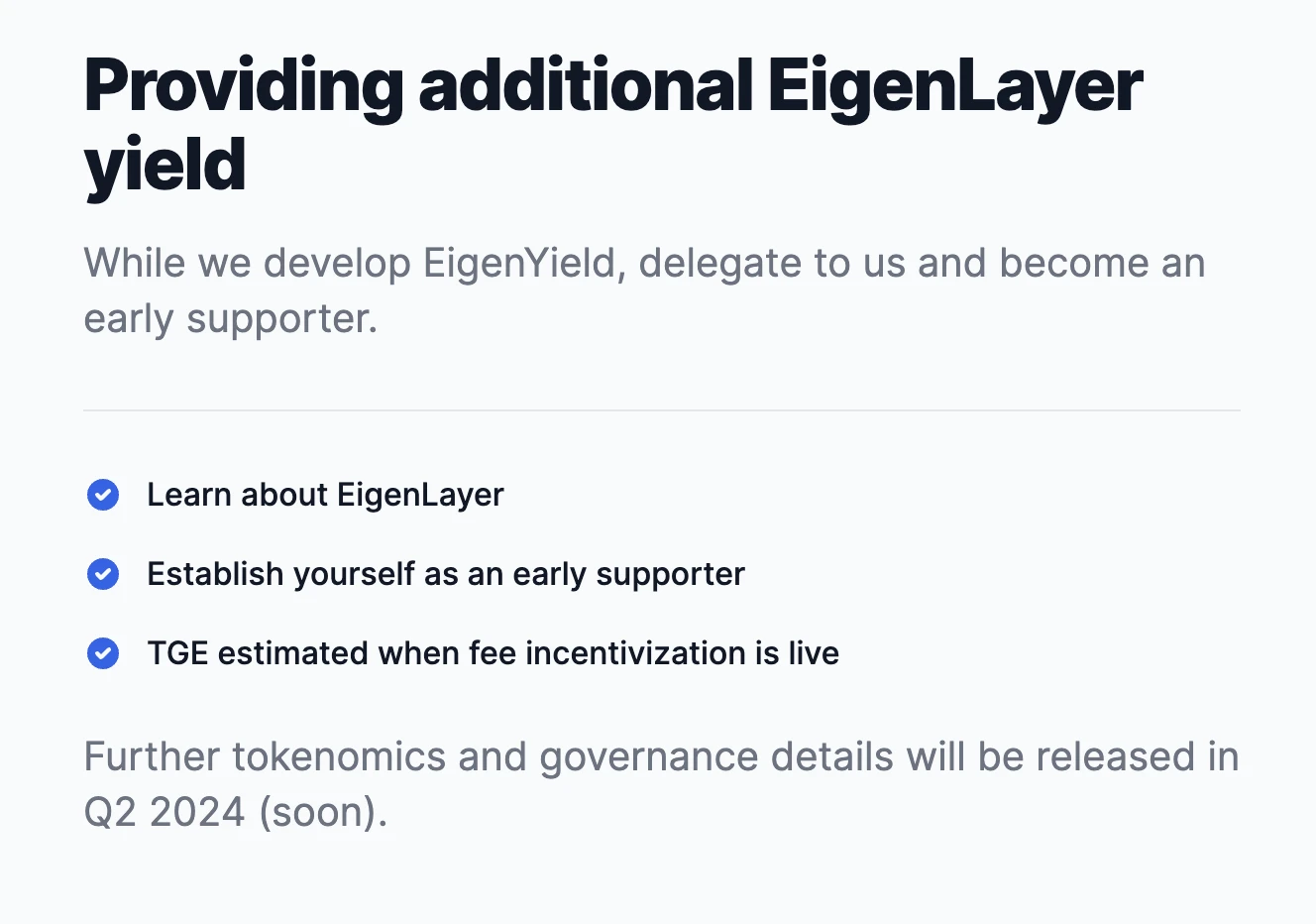
Finally, two points need to be emphasized.
First, EigenLayer does not currently support partial delegation, so once a verification node is selected, all the tokens must be delegated to that node.
Second, many users are concerned about the slashing issue, that is, if the node operates improperly, the funds may be penalized. EigenLayer has mentioned that, for stability reasons, the slashing mechanism will not be activated until later this year, so users do not need to worry too much about this issue at the moment. However, EigenLayer has also mentioned that although there is no slashing risk in the short term, if the verification nodes continue to behave improperly, they will eventually be penalized, so everyone must be more cautious when choosing delegation targets—don't just take my word for it, DYOR.
免责声明:本文章仅代表作者个人观点,不代表本平台的立场和观点。本文章仅供信息分享,不构成对任何人的任何投资建议。用户与作者之间的任何争议,与本平台无关。如网页中刊载的文章或图片涉及侵权,请提供相关的权利证明和身份证明发送邮件到support@aicoin.com,本平台相关工作人员将会进行核查。

